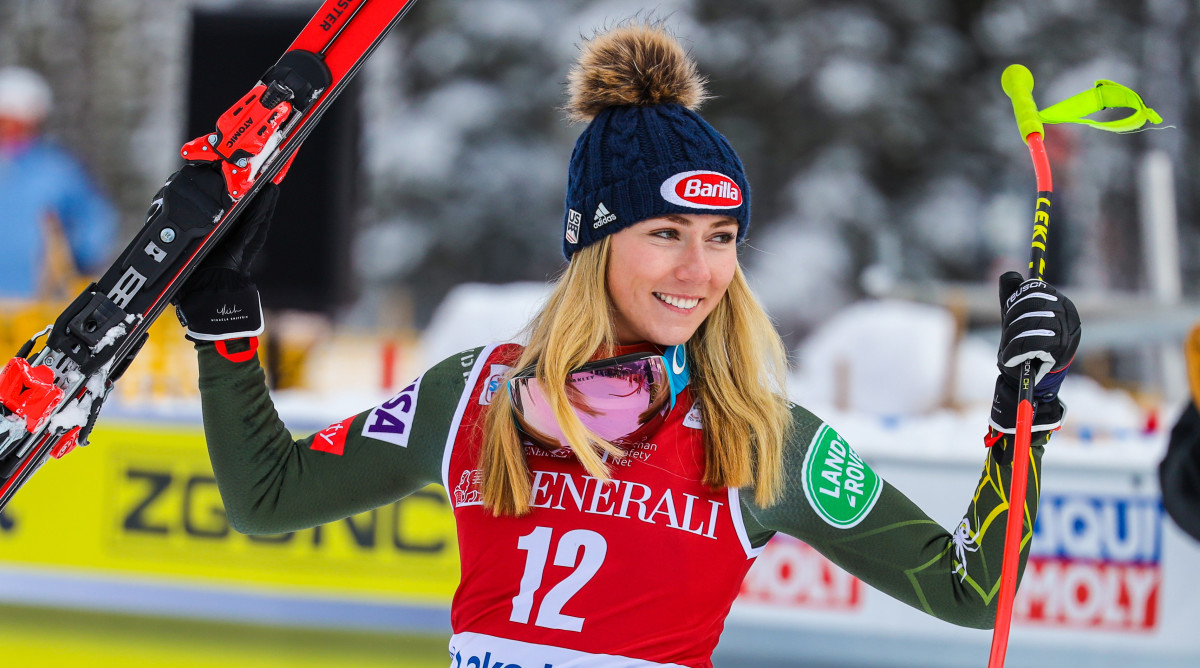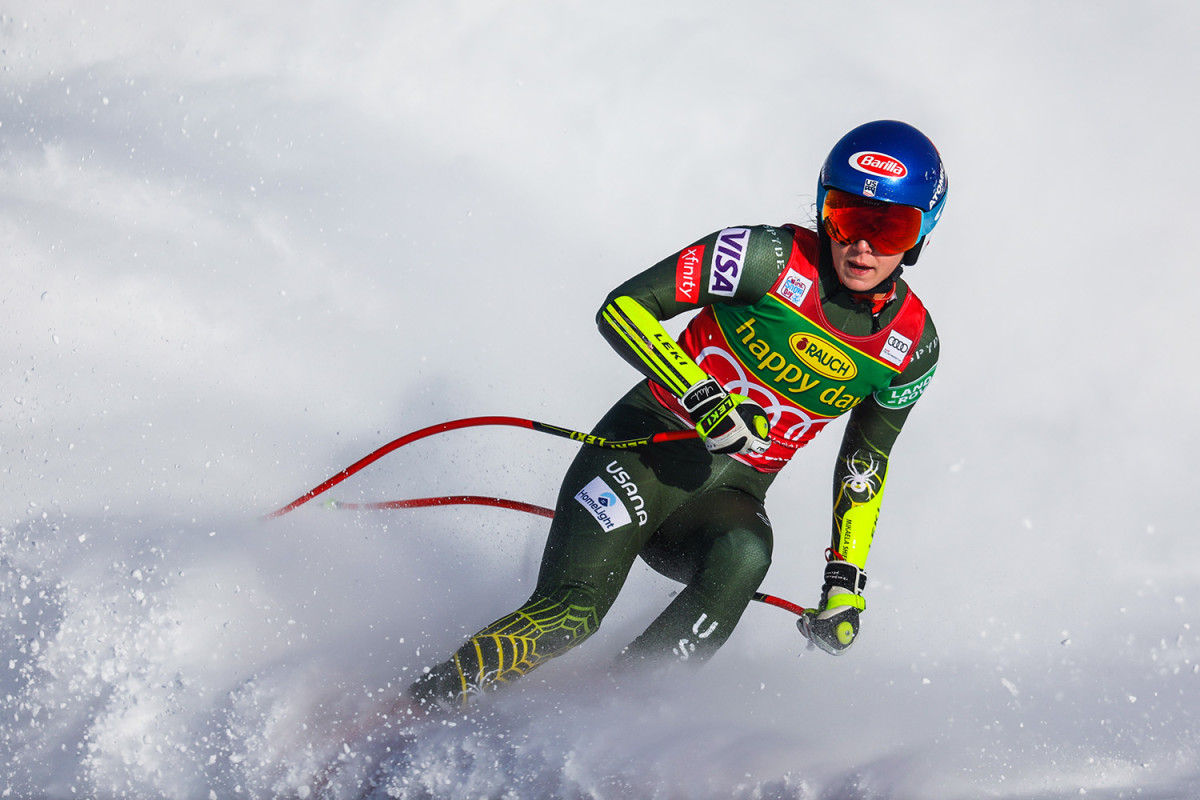Mikaela Shiffrin's Training Secrets Will Surprise You

Whether in training or competition, 24-year-old ski racer Mikaela Shiffrin doesn’t practice yoga, meditate or perform visualization techniques. She most values something far simpler to fuel her unprecedented rise to the top of the World Cup standings, something she needs above all else: sleep. “Sleeping is my meditation,” Shiffrin says. “It’s the only time you can recover, physically and emotionally, at the same time.”
It’s understandable that Shiffrin might need some extra rest. Under the watchful eye of her strength and conditioning coach Jeff Lackie, plus the rest of her full team, she trains as hard as any athlete in her sport. On a typical day during her season, like right now, she wakes up between 5 and 6 a.m., eats a quick but healthy breakfast, then performs 30 minutes of warm-up exercises to activate her core muscles. By 7:30 or 8 a.m., she's usually up the mountain, banking practice runs for the next two to five hours. Then, after lunch and a brief nap, it's time for conditioning workouts in the gym, whether for cardio, strength or mobility. Shiffrin follows those sessions with film review, dinner and more rest. Later, rinse and repeat.

Shiffrin takes a data-obsessed approach to both her practice and race times. Her coaches record every single one of her runs on video, whether she’s preparing for or participating in a competition. That way, the team can not only analyze her times, but her splits and the actual video of her speeding down the course, too. Then they can also see how Shiffrin feels in real time and compare that to how she performed on video. There’s more benefit to that process than just seeing if she could make a faster turn at any point on the course. Shiffrin will also grade herself in the meticulously maintained Google doc her team uses to monitor her physical condition. She’ll rate how she feels after each workout or training run, marking down a “10” if she is close to passing out and writing out a “1” if she feels almost fully rested. She’s usually much closer to 10 than 1.
Shiffrin records her sessions compared to her perceived exhaustion by the minute. Then she and her team look at various factors in her day and weigh them against how she feels. Did she take a nap that day? What kind of training did she do—cardio or strength or mostly ski sessions? “We can objectively rate what my energy levels should be, across a period of time, given this data,” Shiffrin says. “There’s a graph showing the peaks and valleys of my training, and the highest intensity blocks versus the lowest intensity blocks. The last couple of years we’ve collected enough data to see when I get tired in a really intense training block.”
Data in hand, Team Shiffrin can adjust her training and race schedule as necessary. Usually, that means competing in fewer races in any given year. But it could also mean lowering the amount of time that she trains in any given way on any given week. Since Shiffrin competes in an unheard of five disciplines, she requires more stamina than her fellow competitors for all the additional races and must dole out her energy in more directions, with less time to actually train. That’s where the data bent comes in. They call it her in-season maintenance program. It’s the most efficient way to prepare Shiffrin for her sheer number of competitions, giving her the best chance to win in each.
Funny enough, the hardest part for Shiffrin isn’t doing the actual workouts, which are intense and consist of grueling tasks like pulling and dragging weighted sleds, or throwing medicine balls, or sessions on the tortuous slide board, which she does mostly in the afternoons. On lighter days, she’ll ride the bike or hone her mobility or do physical therapy to recover. But the hardest part? That’s inputting the data, a task that Shiffrin can forget to do. That happens enough that she sets multiple alarms each day specifically to log her exhaustion during training. The data is that valuable to her schedule.

“More than anything it's confirmation with what we're theorizing in this moment,” she says. “We know from past experience when I feel a certain way mentally and physically and also emotionally, when that shows, when I go to my coaches and say I'm beat. My synapses are fried and we need to reset. While I don't know if that's going to play out in more wins or something, I know it's going to be healthier for me and the whole team in the long run.”
As for her diet, Shiffrin isn’t gluten-free or plant-based. She tries to eat healthy in general, with lean proteins, salads and lots of vegetables. But for races, she likes to load up on the carbohydrates—usually a sizeable bowl of pasta. “I feel a lot more energy in every way for the race,” she says. “That’s a theory I believe in.”
Then, for the best ski racer in the world, it’s time for her favorite of the day: a nap.
